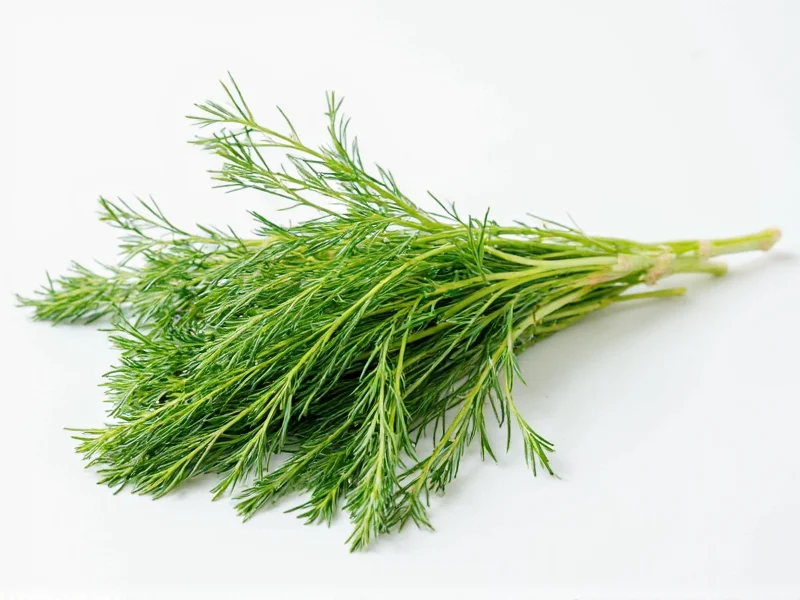Understanding herb measurements is essential for precise cooking and recipe execution. When recipes call for a “sprig of dill,” this culinary term refers to a specific portion of the herb that requires proper interpretation for best results in your dishes.
What Exactly Is a Sprig of Dill?
In culinary terminology, a sprig describes a small stem segment with attached leaves. For dill specifically, a standard sprig measures approximately 2-4 inches in length and includes the feathery fronds that give dill its distinctive flavor. This measurement isn't arbitrary—it's based on traditional cooking practices where fresh herbs are measured by stem portions rather than precise weight or volume.
Precise Measurement Conversions
While “sprig” sounds vague, you can convert this measurement to standard kitchen units with reasonable accuracy. The following table provides reliable conversions for recipe planning:
| Measurement Type | Equivalent to 1 Sprig of Dill |
|---|---|
| Length of stem | 2-4 inches (5-10 cm) |
| Fresh dill leaves | 1-2 teaspoons chopped |
| Dried dill | 1/4 teaspoon |
| Weight (fresh) | 0.1-0.2 ounces (3-6 grams) |
Visual Identification Guide
When selecting dill at the market, recognize that a single sprig typically features:
- A slender green stem about the width of a pencil lead
- Feathery fronds extending from the stem
- Total length between 2-4 inches when trimmed for culinary use
- Vibrant green color indicating freshness
Commercial bunches often contain multiple sprigs—typically 8-12 individual stems per standard grocery store bundle. When recipes specify “one sprig,” they mean a single stem portion, not the entire bunch.
Substituting Dried for Fresh Dill
Understanding the dried-to-fresh conversion ratio prevents flavor imbalances in your dishes. The general rule for herb substitution states that dried herbs are three times more concentrated than their fresh counterparts. Therefore:
- 1 sprig fresh dill = 1/4 teaspoon dried dill
- 3 sprigs fresh dill = 3/4 teaspoon dried dill
- 1 tablespoon fresh chopped dill = 1 teaspoon dried dill
This conversion becomes particularly important when preparing dishes where dill plays a starring role, such as Scandinavian gravlax, Russian beet soup (borscht), or traditional cucumber dill pickles.
When Precision Matters in Dill Measurement
Certain culinary applications demand more precise dill measurements than others. Consider these scenarios:
- Pickling recipes: Require exact measurements as dill affects both flavor and preservation
- Commercial food production: Needs standardized measurements for consistency
- Delicate sauces and dressings: Where dill can easily overpower other flavors
- Home cooking for beginners: When developing consistent results is important
For casual home cooking, slight variations in dill measurement rarely ruin dishes. However, when preparing recipes where dill serves as a primary flavor component, precise measurement ensures optimal results.
Practical Tips for Using Dill Sprigs
Professional chefs employ several techniques when working with dill sprigs:
- Infusion method: Add whole sprigs to soups, stews, or poaching liquids, then remove before serving
- Garnish application: Place a small sprig on finished dishes for visual appeal and subtle flavor
- Chopping technique: Remove leaves from stem before chopping to avoid woody texture
- Storage method: Keep fresh dill sprigs standing in water in the refrigerator for extended freshness
When substituting dill in recipes, remember that fresh dill offers a brighter, more delicate flavor compared to dried dill, which has a more concentrated, slightly different flavor profile. This difference becomes particularly noticeable in cold dishes like salads and dips.
Common Culinary Applications
Dill appears in numerous global cuisines with varying measurement requirements:
- Scandinavian cuisine: Often uses multiple sprigs for fish dishes and sauces
- Mediterranean cooking: Typically employs 1-2 sprigs per serving for vegetable dishes
- Eastern European recipes: May call for generous amounts in soups and pickling brines
- American comfort foods: Usually specifies modest amounts for potato salad or dips
Understanding these cultural variations helps interpret recipe requirements more accurately, especially when working with international cookbooks that might use “sprig” differently based on regional culinary traditions.
Measuring Without a Reference
If you don't have measuring spoons available, use these practical estimation methods:
- Compare to common objects: A sprig's leaves should fill roughly the space of a quarter coin when chopped
- Use your fingers: The amount that fits between thumb and forefinger when pinched
- Visual comparison: About the size of a standard wine cork in volume when chopped
These estimation techniques prove valuable when cooking away from a properly equipped kitchen or when traveling.











 浙公网安备
33010002000092号
浙公网安备
33010002000092号 浙B2-20120091-4
浙B2-20120091-4